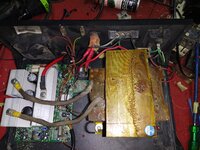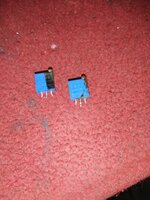magicbrainz
Newbie level 5
Good day, please I have this smiley su-kam 1.4KVa inverter showing high voltage output @ 280v. Even on load the voltage is still 280v. I tried varying the two potentiometer on the PCB, no change was noticed, I even went ahead to change the PT but all still the same. What is the possible cause and solution for it. Thanks.

